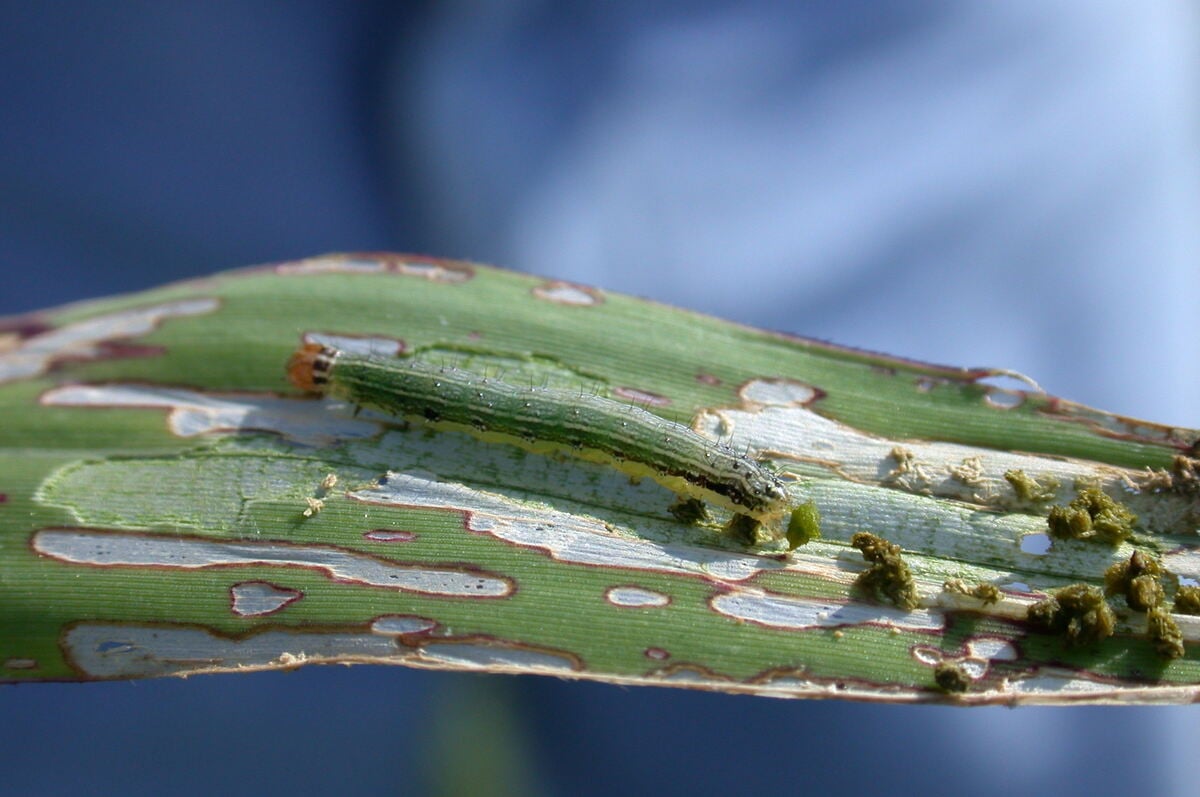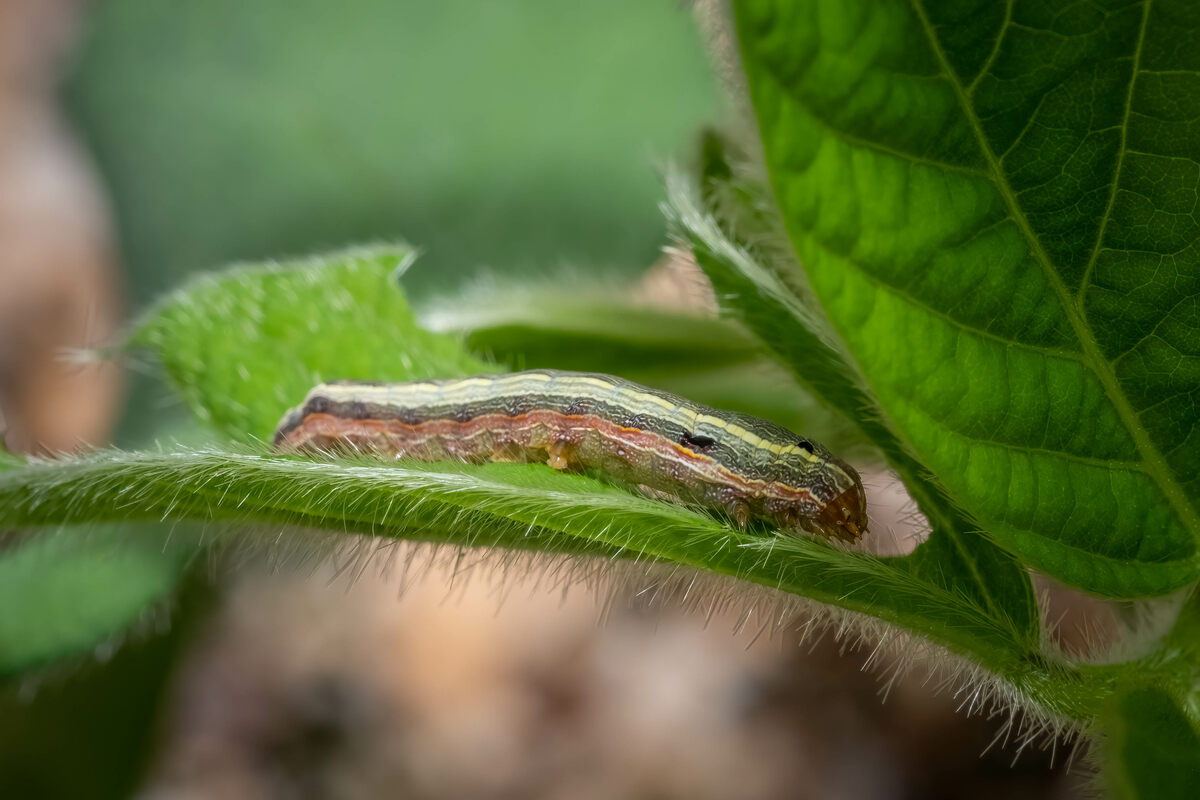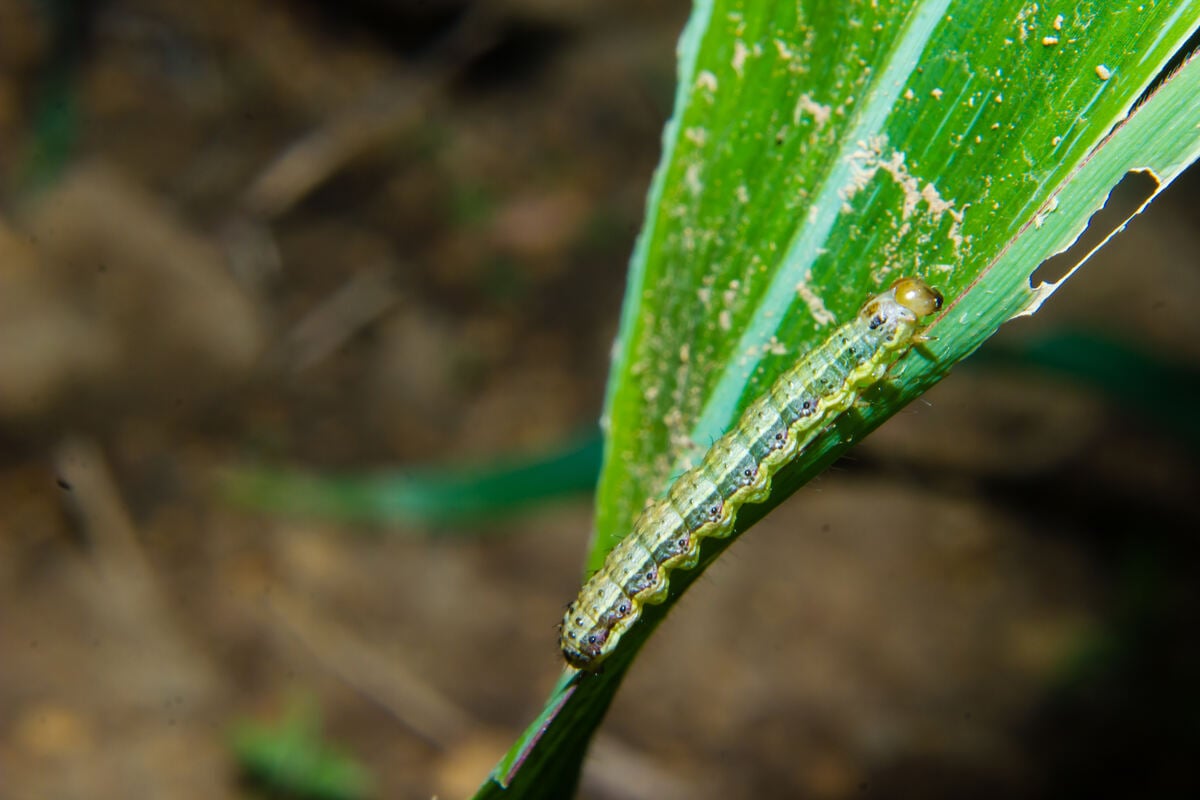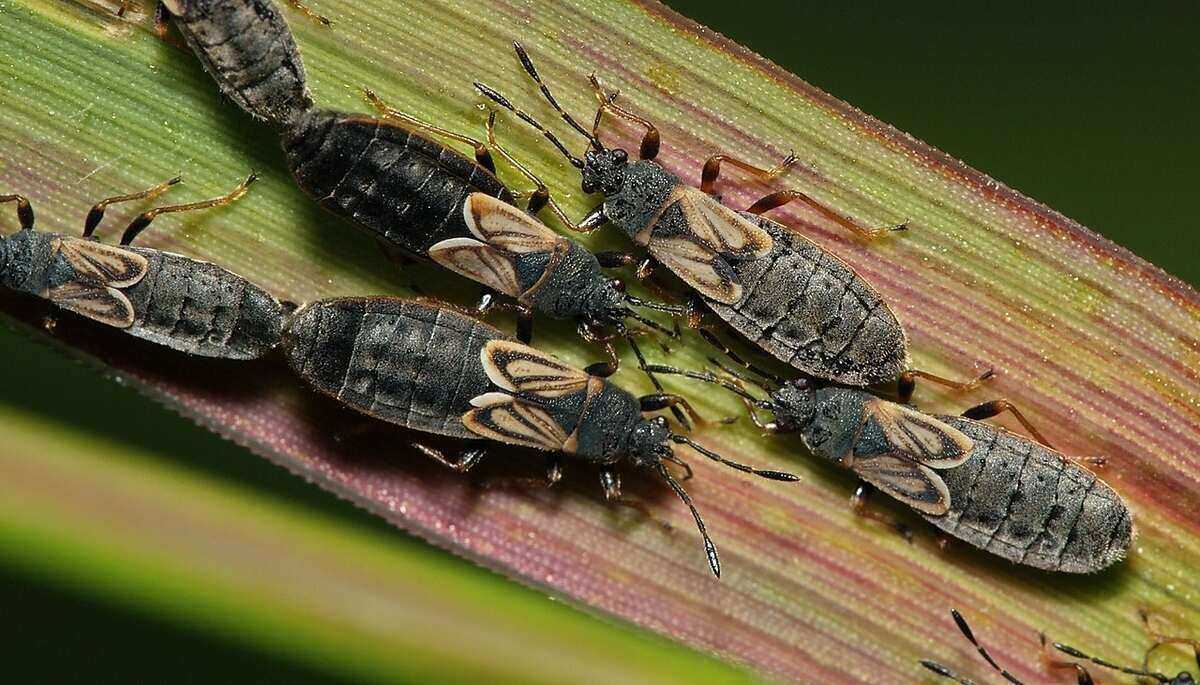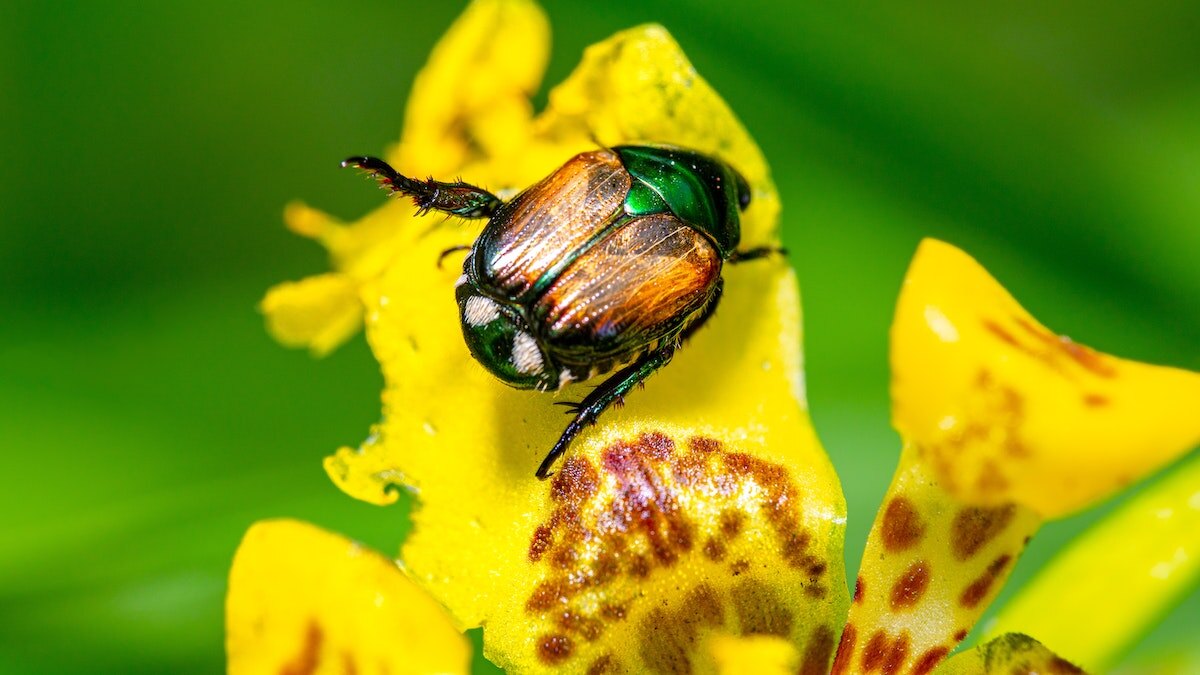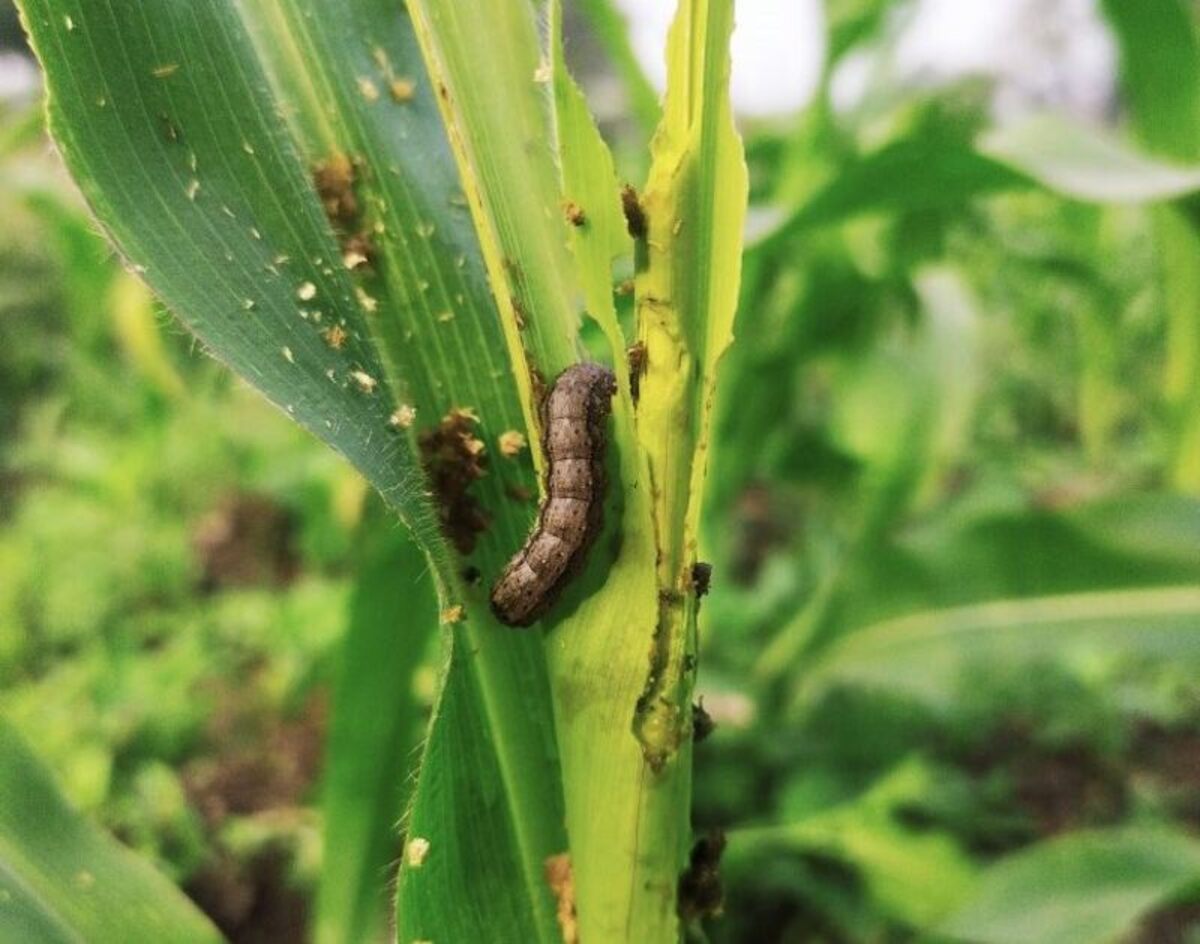
The garden is your sanctuary. You go there to relax and take a breather from the rigors of everyday life. Then, one morning, you take a closer look at your tomatoes and see some holes and nasty-looking bugs munching on the leaves! They might be armyworms, and we will teach you how to get rid of armyworms in the garden in this article.
We’ll help you defend your garden from the armyworm infestation as if you were defending your home. We’ll arm you with neem oil and recruit the beneficial insects. Let’s just say the battle might be long and the victory not easily won, but it will be yours.
We will cover everything on how to get rid of armyworms, including preventing them from appearing again in your garden, identifying their signs when they first arise, and differentiating them from other grubs.
What Are Armyworms?
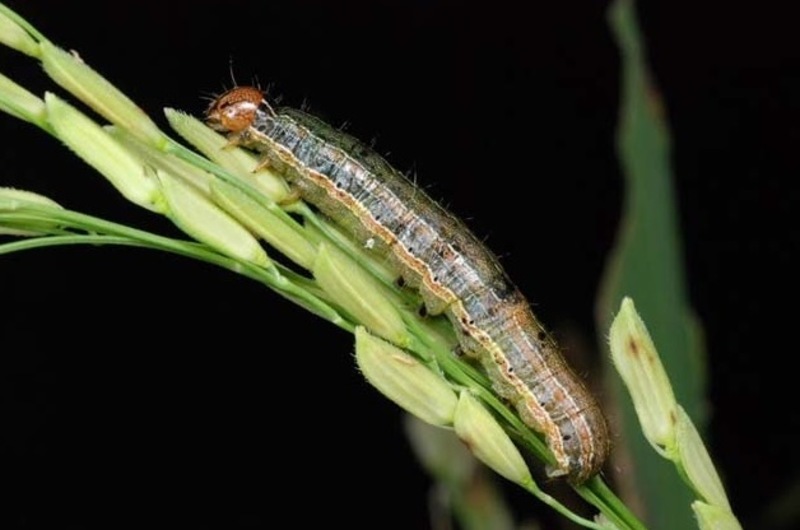
If you have ever seen an army march, you know that their numbers and determination can be daunting. But unfortunately, these traits are also innate to armyworms.
Armyworms are caterpillars known for their voracious appetite and for moving in a group, feeding on many different plants, including:
- Beet
- Cabbage
- Carrot
- Tomato
- Sweet potato
Armyworms are common garden pests and can ruin your garden in a matter of days. They are the larval stage of moths such as Spodoptera frugiperda (fall armyworm), Spodoptera exigua (beet armyworm), Spodoptera ornithogalli (yellow-striped armyworm), and Pseudaletia unipuncta (true armyworm).
They are usually green or brown, with three white stripes down their bodies and an inverted “Y shape” on their heads. They might start by eating your lawn, but that’s just their appetizer. After that, they will eat almost anything that grows in your garden. Sometimes they will even eat each other!
How to Get Rid of Armyworms
If you don’t want armyworms to get their grubby little mouths on your tomatoes and your garden to end up looking like a war zone, here are some options to get rid of armyworm caterpillars.
You can choose the one that works best for you, or you can combine them, depending on the size of the infestation you are facing.
Drop the Armyworms in Soapy Water
There is an easy way to get rid of armyworms without resorting to inorganic pesticides if they are at the beginning of their infestation and you act fast. Here’s how:
- Step 1: Find the armyworms. Look for spots where leaves have been chewed up and look underneath them. You can also search for cottony masses (the armyworm eggs) on the undersides of leaves.
- Step 2: Pick up the armyworms. You can use your hands to pick them up and a damp paper towel for the eggs. They do not bite, sting, or transmit diseases, so it should not be a problem (unless you’re grossed out by it).
- Step 3: Drop the armyworms into a bucket of soapy water. Use a teaspoonful of soap for a gallon of water. Don’t worry about getting them all at once; just make sure you don’t leave any behind.
Apply Neem Oil
Neem oil is a natural insecticide used for pest control of a series of species, including armyworms. It contains azadirachtin, which causes a series of biological and hormonal dysfunctions in insects, interrupting their life cycle.
A recent study showed that armyworms couldn’t complete their larval cycle once exposed to neem oil, reducing their lifespan and ability to reproduce.
You can use neem oil on vegetables, fruit trees, flowers, and shrubs without harming them. The best part is that this method is safe for humans and pets and won’t harm beneficial insects like honey bees or ladybugs, as long as you apply the oil during late evening, night, or early morning.
Here’s how to apply it:
- Step 1: Mix 2 tablespoons of neem oil with a gallon of water in your garden sprayer and shake well.
- Step 2: Spray your garden with the mixture, making sure you get the leaves’ undersides.
- Step 3: Repeat every few weeks until there are no armyworms left.
Attract Beneficial Insects
The following beneficial insects could side with you in the mission against armyworms:
Ladybugs
Ladybugs have been used for centuries as a natural way to control pests such as aphids, whiteflies, mealybugs, and thrips, and they love to eat small armyworms.
If you already have ladybugs in your garden, this should be a breeze; if not, you can buy ladybugs on Amazon or a local store and introduce them into your garden. You can also try attracting them into your herb garden naturally by planting pollen plants like:
- Chives
- Cilantro
- Dill
- Fennel
Lacewings
Lacewings are tiny green insects with wing veins that give them a lacy appearance, as their name suggests. They feed mainly on aphids but also like eating armyworm eggs.
Lacewings also like pollen and nectar, so if you don’t want to buy them, you can try attracting them by planting cosmos, goldenrod, or marguerite daisies.
Minute Pirate Bugs
Minute pirate bugs might look like pests, but they feed on common garden pests, such as aphids, mites, and armyworm eggs.
You can also buy them in stores, but they are not likely to stay in the garden unless there are flowering plants providing nectar and pollen for them.
Parasitic Wasps
These wasps (Trichogramma wasps) lay eggs inside the armyworms’ bodies, killing them from within and preventing further infestation in your garden.
Parasitic wasps are only dangerous to some insects and won’t sting you, so if you see one flying around your yard, don’t panic — just let it do its thing!
You can attract parasitic wasps by planting herbs and flowers that supply nectar and pollen. For that, you might get all the beneficial insects you need if you decide to have an herb garden.
Release Beneficial Nematodes
Suppose armyworms were Star Wars characters, and they all were Force-sensitive. In this case, beneficial nematodes would be the Jedis, and armyworms would be their evil counterpart, the Sith.
Beneficial nematodes are microscopic worm-like organisms that enjoy eating other insects like caterpillars, whiteflies, and, luckily for us, armyworms. That means they can control the growth of these pests without having any harmful effects on other parts of your garden’s ecosystem.
Here is the best way to use them:
- Step 1: Buy the beneficial nematodes at your local garden store and apply them as soon as possible. They can be sold in a wet sponge, a gel, or dry, and all forms work well. It’s best to do this during spring or fall when the armyworms are at their larval stage.
- Step 2: Dissolve the nematodes in water, so they can travel to their prey more efficiently. Use a sprayer to apply them to your plants. Keep your soil moist so they can keep searching for all the armyworms left.
Apply Bacillus thuringiensis (Bt)
Bt stands for Bacillus thuringiensis, a naturally occurring bacteria that targets insects. When applied to plants, it creates a toxin that kills caterpillars and other insects which eat it. They’re perfect for use in a garden because they are not harmful to humans and other animals.
Here’s how to use it:
- Step 1: Mix the Bt with water and put it in a spray bottle or garden sprayer. Follow the label instructions to ensure you’re using the right amount.
- Step 2: Apply the Bt on your plants in the early morning or evening since it can degrade quickly in sunlight. Make sure you get the top and the underside of the leaves.
- Step 3: Wait 48 hours to start seeing the effects. Reapply every week if needed.
Apply Spinosad
Spinosad is an environmentally friendly, organic insecticide made of bacteria fermentation. It is also safe for humans and beneficial insects.
When used correctly, it won’t harm pollinators like bees or other beneficial insects like ladybugs, making them perfect for flower gardeners. However, it can kill pollinator caterpillars.
Like Bt, spinosad should be mixed with water and applied to plants in the early morning or the evening since sunlight degrades it.
Use Inorganic Insecticides
Inorganic pesticides such as carbaryl (Sevin) can work by overstimulating pests’ nervous systems when eaten, which kills them, including armyworms.
However, only use carbaryl as a last resort to get rid of armyworms. It can be moderately toxic to humans and other mammals and kill beneficial insects. If you do use carbaryl, follow all instructions carefully so that you do not cause harm to yourself or others.
How to Prevent Armyworms
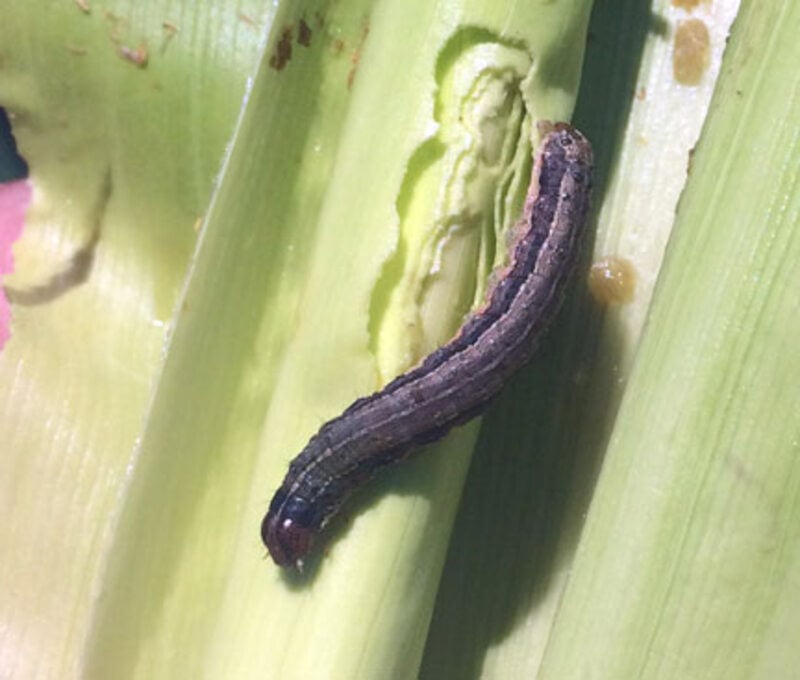
Suppose you managed to get rid of all the armyworms in your garden. Congratulations! Chances are you already know they can be a real headache, so let’s ensure they don’t ever come back.
There are a few things you can do to prevent armyworms from taking over your garden:
Keep Your Garden Clean
The first rule of thumb when preventing armyworms is to keep your garden free of plant debris— this is where they tend to hide out between feasting on your plants. If you can keep the area around your plants clean and clear of trash or plant debris, you’ll reduce their chances of infestation.
Set Pheromone Traps
Pheromone traps work by using chemicals to mimic the scent of a female moth to attract male moths. The male moths are tricked and get stuck on the trap’s sticky surface.
They can be used to monitor armyworm moths, detecting an infestation before it occurs or when it’s just beginning. You can easily set an armyworm pheromone trap in your garden.
Get Bird Feeders
Birds are natural predators of armyworms. If you have bird feeders or bird baths in your garden, then it’s likely that birds will come through and eat up any armyworms before they can do much damage to your plants.
Install Floating Row Covers
With a floating row cover, you can install a mechanical barrier against armyworms (and other pests). These can even provide your garden with additional benefits, such as decreasing the need for watering, protecting against frost, and creating a greenhouse effect.
Row covers are especially effective for growing lettuce, spinach, broccoli, or cabbage. You can cover your garden from March to May, and then again from September to November.
Plant Some Flowers and Herbs
Growing a pollinator garden with plants that produce nectar and pollen can attract beneficial insects that will work like natural bodyguards, preventing unwanted armyworms from coming into the party.
Fill the garden with many different plants so that there is always something blooming for these beneficial insects to feed on. Good examples include:
- Dill
- Coriander
- Fennel
- Marigolds
- Daisies
Signs of Armyworm Damage
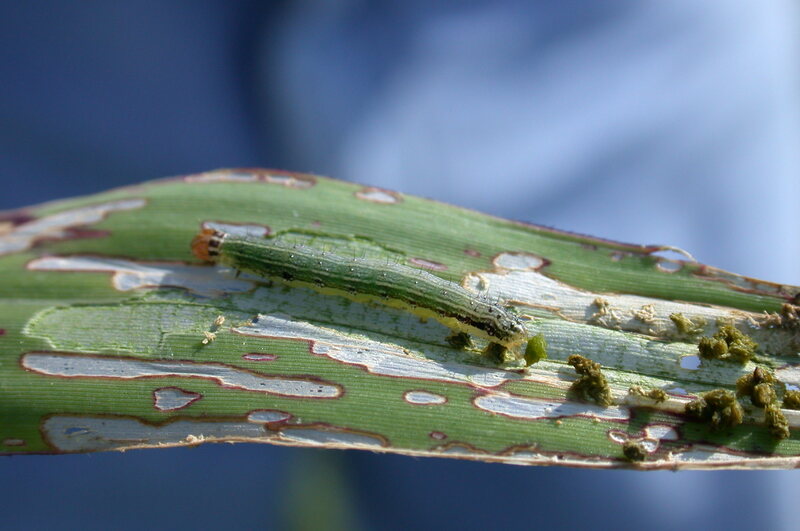
Armyworm moths lay their eggs on plants in late summer or early fall. After hatching from their eggs, the armyworm larvae move around looking for food until they find it. Once they settle down on a plant, they eat its leaves and stems until there’s nothing left.
In addition, armyworms can eat plants like grasses, weeds, flowers, shrubs, and vegetables in your garden bed.
Here are some signs of armyworm damage to look out for:
- You notice the blades of grass around your grass are ragged or chewed up at the tips.
- If you plant lettuce or cabbage, you can see that some leaves are “skeletonized” with a transparent windowpane.
- You notice some oddly shaped holes in your tomatoes.
- There are round holes in your flowers’ leaves.
- You notice clusters of eggs on your plant’s leaves.
- There are brown patches of grass around your garden and some areas with bare soil.
- There are more birds and rodents than usual in your garden.
Here’s a LawnStarter guide on how to get rid of armyworms on the lawn.
There’s also a way to know for sure if you have been cursed with an infestation of armyworms. It’s called the Soap Flush Test. You can conduct this test by following these steps:
- Step 1: Mix 3 tablespoons of liquid dish soap with 1 gallon of water.
- Step 2: Pour the mixture into a 3 x 3 feet area.
- Step 3: If there are armyworms in your garden soil, the soap will agitate their skin, and they will come out to the surface.
- Step 4: Get rid of the armyworms by using the methods listed in this article.
- Step 5: If you tried and no armyworms came out, repeat the process in a different area and at another time of the day.
How to Differentiate Armyworms From Other Caterpillars
It’s essential to differentiate armyworms from other types of caterpillars, especially since some caterpillars can benefit the environment. Here are a few worm-like insects that could be mistaken for armyworms.
Monarch Butterfly Caterpillars
Monarch butterfly caterpillars are the immature stage of a monarch butterfly.
- They have three pairs of legs and five pairs of prolegs (small fleshy appendages on the abdomen).
- They have black, yellow, and white horizontal stripes on their body.
- They are cute and not nasty-looking like armyworms.
- They only feed on milkweed plants.
- Once they mature, monarch butterflies are valuable pollinators. For that, there’s no need to get rid of them!
Cutworms
Cutworms are also in the larva stage of adult moths, and they also eat your plants, but they like eating the stems instead of the leaves.
- They can be black, brown, or gray.
- Some variegated cutworms have small yellow dots, but they don’t have stripes on their body as armyworms do.
- A distinctive feature of cutworms is that they curl themselves into a C when disturbed.
- You can get rid of cutworms using similar methods to armyworms.
Sod Webworms
Sod webworms can be light green to light brown and are just as greedy for grass as armyworms, although smaller. They don’t have stripes or a Y shape on their heads.
They start by munching the tip of the grass blades but eventually reach the soil surface, eating almost the entire plant. You’ll notice brown spots on the lawn. You can exterminate sod webworms with Bt as well.
Tomato Leaf Miners
Leaf miners are tiny insects that cause damage to many crops across the country. Leaf miners’ are smaller than armyworms and cutworms, but they can cause just as much harm.
As their name suggests, they mine the leaf tissue, leaving distinctive white trails on the leaf. These white trails reduce the photosynthetic capabilities of the plant, which could end up killing them in young seedlings.
Getting rid of these insects is not easy, but you can start by using beneficial insects such as wasps.
FAQ About Armyworms
Will Vinegar Kill Armyworms?
No, in fact, vinegar isn’t a good control measure for armyworms. The smell of vinegar can actually attract adult armyworm moths to the garden, so they will likely end up laying more eggs. In addition, vinegar can kill weeds, but it will also burn your plants.
When Should I Treat Armyworms?
It is best to apply the treatment in the late afternoon, just before the armyworms come out to feed. However, if you see them during the day, don’t hesitate to pick them up and drop them in a bucket of soapy water.
Regarding the season, armyworms tend to appear in late summer or early fall, so you might want to wait for this period before initiating your pest control efforts.
Where Do Armyworms Live in the US?
Armyworms can be found in most U.S. states. Still, they prefer warmer climates and only outlast winter in southern states, like Florida and Texas.
When to Hire a Professional
While battling Sith with lightsabers seemed fun on Star Wars, getting rid of the armyworm menace might not be.
You might be tired of dealing with those nasty little armyworms in your garden, or you don’t want to deal with them at all. In that case, hiring a local gardening pro is probably your best bet. Are armyworms in your lawn, too? Connect with a local lawn care pro who can maintain your lawn and keep pests at bay.
LawnStarter participates in the Amazon Services LLC Associates Program, an affiliate advertising program. LawnStarter may earn revenue from products promoted in this article.
Main Image Credit: Shim / Pixahive / CC0 1.0
